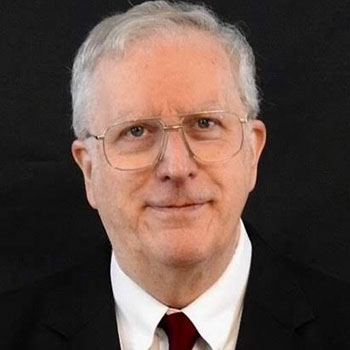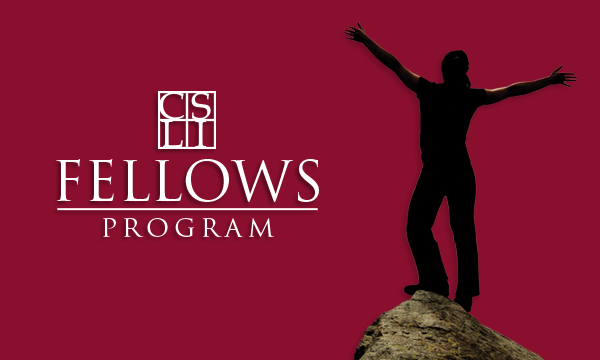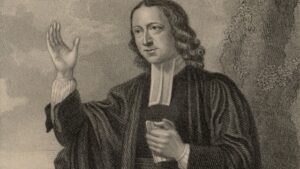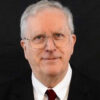Back to series



Profiles in Faith: John Wesley
Click here to open a Print - Friendly PDF
This year Methodists from all over the world are celebrating the three-hundredth anniversary of the birth of their founder, John Wesley, who was born at Epworth, England, on June 17, 1703, and died in London on March 2, 1791.
Although Methodist denominations have sprung up from the Methodist renewal movement that Wesley commenced in the Church of England, Wesley never belonged to the Methodist Church: he remained an Anglican priest and desired his evangelical followers to stay in this national church. He is known as one of the great preachers and leaders of the Evangelical Revival during the First Great Awakening.
During his ministry Wesley rode over 250,000 miles on horseback, a distance equal to ten circuits of the globe around the equator. He preached over 40,000 sermons—sometimes four or five a day—which led to the conversion of thousands. He succeeded in reaching the poor and simple commoners through the practice of open air preaching to audiences estimated in the tens of thousands. At his death in 1791 his followers numbered 79,000 in England and 40,000 in America. In 1995 there were approximately 23 million affiliated with Methodist churches worldwide in 108 countries.
 Not famous as a systematic theologian, John Wesley was an exponent of “practical theology,” in which he theorized on the Christian’s experience of grace. This type of theology is not inferior to systematics, but it is directed to concerns of spiritual theology—the study of the Christian life with attention to the spiritual disciplines, spiritual formation, and accountable discipleship. He was for his day what Richard Foster and Dallas Willard have been for ours in their attention to the cultivation of the disciplined spiritual life. Unlike some revival preachers who are all emotion and no intellect, Samuel Johnson once said that John Wesley was the most widely read man in England. His theology derived from his extensive readings in the early church fathers, Protestant reformers, Puritans, Pietists, Anglicans, Orthodox, and Catholic mystics. The contributions of John along with his brother Charles, the famous hymn writer, have left the church with a rich hymnody.
Not famous as a systematic theologian, John Wesley was an exponent of “practical theology,” in which he theorized on the Christian’s experience of grace. This type of theology is not inferior to systematics, but it is directed to concerns of spiritual theology—the study of the Christian life with attention to the spiritual disciplines, spiritual formation, and accountable discipleship. He was for his day what Richard Foster and Dallas Willard have been for ours in their attention to the cultivation of the disciplined spiritual life. Unlike some revival preachers who are all emotion and no intellect, Samuel Johnson once said that John Wesley was the most widely read man in England. His theology derived from his extensive readings in the early church fathers, Protestant reformers, Puritans, Pietists, Anglicans, Orthodox, and Catholic mystics. The contributions of John along with his brother Charles, the famous hymn writer, have left the church with a rich hymnody.
Besides all of these accolades, I prefer to celebrate Wesley’s three-hundredth birthday by describing his role as a pioneering Evangelical spiritual director. Spiritual direction, simply put, is guidance given to people in their relationship with God.
His Parents, Samuel Wesley and Susanna Annesley Wesley
Samuel was Anglican rector of Epworth Parish, Lincolnshire. This spiritual director wrote an advice column in The Athenian Oracle in response to questions from his readers. Unfortunately, Samuel was not popular with all of his parishioners at home. To persuade him to step down as rector (pastor), some parishioners set the Epworth rectory on fire while Samuel, Susanna, and their children were sleeping. Seven-year-old John was rescued at the last minute through a window in an upstairs room. His mother thought that her son was “a brand plucked from the burning” and consequently resolved thereafter to be “more particularly careful for the soul of this child, which God had so mercifully provided for.” Susanna guided John to believe that God had a special purpose for the life of one that God had so miraculously rescued from the flames. This was probably John’s first encounter with spiritual guidance.
Susanna Annesley Wesley, the brilliant daughter of a dissenting Puritan minister, Dr. Samuel Annesley, read the Bible and works of devotion, prayed, and journaled in a methodical manner. Journal writing became an important part of the spiritual life of her son. In 1711, she began to meet with each of her nineteen children alone one-half hour each week to talk about their faith issues. This was her spiritual direction for each of her children.
Wesley’s Oxford Conversion of 1725
After being raised by two spiritual directors at home, John Wesley entered Christ Church College, Oxford University, in 1720 where he subsequently completed requirements for the B.A. degree in 1724 and the M.A. degree in 1727. The moral laxity and worldliness of Oxford was a subject of common knowledge. Around the turn of the year 1725 John began to consider his faith more seriously. We call this Wesley’s Oxford ethical conversion of 1725. A conversion is an experience of God in which one turns from self as the center of life to making God the center. Two events ensued that led Wesley to the experience of an ethical conversion in which he began to strive for Christian perfection: (1) he met a spiritual friend, Sally Kirkham, who provided him with counsel and with whom he fell in love, and (2) he read at her insistence Jeremy Taylor’s Rules for Holy Living, an Anglican manual for the spiritual life, and Thomas à Kempis’s The Imitation of Christ, a book which has enjoyed a popularity through the centuries second only to the Bible. These works prompted Wesley to pursue the devout and holy life with greater urgency. The experience of reading Thomas à Kempis set Wesley on a thirteen-year journey towards mystical union with Christ.
Wesley’s first conversion of 1725 was moral in nature in contrast to the 1738 Aldersgate conversion that brought about his evangelical awakening with an accompanying assurance of salvation. The Oxford conversion involved the turning of a man of the world to God and holiness.
Wesley’s conversion was later reinforced in 1727 by reading the Anglican William Law’s Christian Perfection and Serious Call to the Devout and Holy Life. Wesley noted the inspiration these books had had on him: “These convinced me more than ever of the absolute impossibility of being half a Christian.” Wesley continued, “And I determined through His grace...to be all devoted to God— to give Him all my soul, my body, and my substance.” This was a decision from which Wesley never wavered the whole of his life’s career. He began to regulate his life with all the rigor of a monk. Influenced by Taylor and Law, he called idleness a gross sin, and he abandoned leisure forever. He arose from his bed at four every morning and gave his first hour to prayer. Once during each succeeding hour of the day he gave a further five minutes from each that he might have continued conversation with God. Wesley was very disciplined and methodical.
After graduation from Oxford, John Wesley served as a priest at Wroot, Lincolnshire while his brother, Charles Wesley, commenced his studies at Christ Church College, Oxford. In May 1729, Charles persuaded two or three students to gather for study. Later in November, John returned to Oxford as a fellow of Lincoln College and united with this group for the purpose of mutual religious instruction. Here he passed on what he had obtained from God through the Oxford conversion of 1725. Under John’s direction, the student friends of Charles composed a scheme of study consisting of classical and theological works. Their spiritual rule of life included frequent attendance at Holy Communion and regular periods of prayer and Bible reading.
Wesley’s Leadership of the Holy Club
While this society chose no name for itself, its members were variously labeled by mocking classmates as the ”Sacramentarians,” the “Bible Moths,” “the Holy Club,” or the “Methodists.” In time they came to practice methodical devotion. They distributed pious books. They relieved prisoners’ material wants. They supplied the poor with food and clothing. They assisted in the release of debtors from prison.
Most of all, Wesley is remembered as a spiritual director and leader of the Holy Club of Oxford Methodists who looked to him for spiritual advice. In 1729 three or four young men assembled at Oxford to read the Bible and “saw that they could not be saved without holiness, followed after it, and incited others so to do.” Wesley’s journal records that these Oxford Methodist students “desired me as a favor that I would direct them in all things.” From 1729 to 1735 there were no more than forty-five Oxford Methodists. Wesley’s oversight of the Holy Club constituted a form of group spiritual direction. He also wrote letters of spiritual counsel to these students and others.
Growing Dissatisfaction with the Path to Perfection
John and Charles Wesley left Oxford for missionary work in Georgia in 1735. John wanted an assurance of going to heaven. He became dissatisfied with the approach to mystical union through the asceticism he had been practicing at Oxford. He found something very real in the faith of the Moravians while he was traveling on the ship Simmonds. All feared the ship would be lost in a great storm. The Moravians were calmly singing hymns in the midst of the storm, whereas Wesley found himself unprepared to die. He became envious of their assurance of salvation and certainty of faith. He returned from Georgia feeling he had failed as a missionary.
The Aldersgate Conversion of 1738
Upon his return to London, Wesley attended a Moravian service at Aldersgate Street on May 24, 1738. Upon hearing Martin Luther’s commentary on the Epistle to the Romans, John Wesley received an assurance of salvation and a belief that he was justified by faith alone. “In the evening I went very unwillingly to a society in Aldersgate Street, where one was reading Luther’s preface to the Epistle to the Romans,” Wesley chronicled his Aldersgate conversion. “About a quarter before nine, while he was describing the change which God works in the heart through faith in Christ, I felt my heart strangely warmed. I felt I did trust in Christ, Christ alone for salvation; and an assurance was given me that He had taken away my sins, even mine, and saved me from the law of sin and death.” We call this Wesley’s evangelical conversion that led him to preach the new birth and justification by faith alone.
The Change of Spiritual Direction after Aldersgate in an Evangelical Direction
Aldersgate changed the way Wesley went about spiritual direction. He saw that there was an easier way to experience union and communion with God. One could respond to the preaching of the gospel, “Believe and be saved.” One did not first need to go through an arduous path of asceticism, self-denial, mortification, and dark night of the soul before experiencing union with Christ. One needed to experience justification by faith alone as Martin Luther taught and the assurance of salvation as the Puritans believed and his father had experienced. John Wesley and his fellow Oxford Methodist George Whitefield preached the necessity of the new birth. Multitudes came to the joyous experience of God’s grace.
 However, Wesley, who felt that Luther did not emphasize sanctification enough, kept his commitment to the devout and holy life found in Anglican devotion and attached it to his new evangelicalism. At first he felt that the Catholic path to reach mystical union with God through asceticism and a dark night of the soul to be a blind alley. He put his confidence in the reception of justifying grace through conversion and new birth. In time, however, he once again advocated some of the treasures of Catholic mystical spirituality as suitable reading for his followers if they were balanced with the Protestant concept of justification by faith alone. In his editing he deleted doctrinal assertions that were incompatible with evangelical faith.
However, Wesley, who felt that Luther did not emphasize sanctification enough, kept his commitment to the devout and holy life found in Anglican devotion and attached it to his new evangelicalism. At first he felt that the Catholic path to reach mystical union with God through asceticism and a dark night of the soul to be a blind alley. He put his confidence in the reception of justifying grace through conversion and new birth. In time, however, he once again advocated some of the treasures of Catholic mystical spirituality as suitable reading for his followers if they were balanced with the Protestant concept of justification by faith alone. In his editing he deleted doctrinal assertions that were incompatible with evangelical faith.
Wesley’s audience increased as he began preaching in churches and later in the open fields. He could no longer give such concentrated time for spiritual guidance to a small number as he had in the Holy Club at Oxford, but here is what he did.
- He composed letters of spiritual guidance urging people to pursue the life of prayer, devotion, and holiness. He even wrote William Wilberforce, Member of Parliament, to urge him to take up the cause of ending the practice of slave trading and slave holding. Wilberforce secured in Parliament the abolition of the slave trade and later the institution of slavery in the British Empire. Previously in 1774, Wesley had written Thoughts on Slavery, an influential antislavery work. We have thousands of letters by Wesley with spiritual counsel on personal and social holiness.
- In addition to his massive correspondence, Wesley instructed his followers to read classics of Christian spirituality. These are found in his Christian Library. He translated, edited, and published fifty volumes of these between 1749 and 1757 in the Christian Library. He had his followers read works by Catholic, Orthodox, Puritan, Pietist, and Anglican authors. Assisting people to grow in their faith through the spiritual discipline of study is an important role of a spiritual director.
- Wesley also directed his followers through classes, bands, and select societies. In fact, John Wesley delegated the responsibility of spiritual direction to a host of lay people who led Methodists in their growth in holiness through small groups. Wesley brought his convictions on the pursuit of Christian holiness within the structure of accountability through spiritual direction of individuals and groups.
Wesley’s approach to spiritual direction changed by urging evangelistic preaching through which inquirers would be won to faith in Jesus Christ and the experience of justifying grace. He advised people how to experience the new birth and the joy of Christian assurance. However, he continued his commitment to directing souls that he had gained from Anglicanism while a tutor at Oxford University. Wesley continued to make spiritual formation a priority during the evangelical awakenings as he repeatedly made Christian perfection one of the major emphases of his preaching and guidance of souls.
Many evangelists have put almost all of their emphasis upon the conversion of the lost and getting them into church. They have often forgotten the important work of helping these converts mature in the faith and grow in holiness. Wesley was both an evangelist and a spiritual director. Unfortunately, this dual emphasis has been lost by many evangelicals since his time. Wesley should go down in history as one of the great Protestant spiritual directors not only of Methodism but of the universal church. He calls upon us to seek out spiritual direction ourselves and invites evangelicals to rediscover the blessings of spiritual guidance lost in the nineteenth and early twentieth centuries to mass revivalism.

Arthur Dicken Thomas
ProfessorArthur Dicken Thomas is Adjunct Professor of Spirituality and Church History at Wesley Theological Seminary, researcher and writer at Union Presbyterian Seminary Library, Richmond, VA and retired Professor of Christian Spirituality at the Ecumenical Institute of Theology, St. Mary’s Seminary in Baltimore in 2017. Art received his B.A. from the College of William and Mary, M.Div. from Gordon-Conwell Theological Seminary, M.A. from Wesley Theological Seminary, Th.M. and Ph.D. in church history from Union Theological Seminary in Virginia. His publications include The Second Great Awakening in Virginia and Slavery Reform, Early Churches of Culpeper County, Virginia and about forty-five articles.

 COPYRIGHT: This publication is published by C.S. Lewis Institute; 8001 Braddock Road, Suite 301; Springfield, VA 22151. Portions of the publication may be reproduced for noncommercial, local church or ministry use without prior permission. Electronic copies of the PDF files may be duplicated and transmitted via e-mail for personal and church use. Articles may not be modified without prior written permission of the Institute. For questions, contact the Institute: 703.914.5602 or email us.
COPYRIGHT: This publication is published by C.S. Lewis Institute; 8001 Braddock Road, Suite 301; Springfield, VA 22151. Portions of the publication may be reproduced for noncommercial, local church or ministry use without prior permission. Electronic copies of the PDF files may be duplicated and transmitted via e-mail for personal and church use. Articles may not be modified without prior written permission of the Institute. For questions, contact the Institute: 703.914.5602 or email us.
-
Recent Podcasts
The Defiance of Grace in the Ministry of Christ
by Dane Ortlund, Aimee Riegert on April 4, 2025Jesus is surprising. It seems everything He did...Read More
-
Living in Wonder – Rod Dreher’s Story
by Rod Dreher, Jana Harmon on March 28, 2025
-
The Surprising Imagination of C.S. Lewis
by Mark Neal, Aimee Riegert on March 21, 2025
-
Recent Publications
Who Is The Real Jesus?
by John R.W. Stott on April 1, 2025The 21st century has provoked many conversations and...Read More
-
Does the Modern World Face a Crisis of Meaning?
by Cameron McAllister on March 1, 2025
-
The Impact of Technology on the Christian Life
by Tony Reinke on February 14, 2025
0
All Booked
0.00
All Booked
0.00
All Booked
23903
Fellows Program – Now Accepting Applications!
https://www.cslewisinstitute.org/?event=fellows-program-applications-available-on-february-1st&event_date=2025-04-15®=1
https://www.paypal.com/cgi-bin/webscr
2025-04-15

Next coming event
Days
Hours
Minutes
Seconds
Fellows Program – Now Accepting Applications!
On April 15, 2025 at 12:55 amSpeakers

Arthur Dicken Thomas
Professor
Team Members

Arthur Dicken Thomas
ProfessorArthur Dicken Thomas is Adjunct Professor of Spirituality and Church History at Wesley Theological Seminary, researcher and writer at Union Presbyterian Seminary Library, Richmond, VA and retired Professor of Christian Spirituality at the Ecumenical Institute of Theology, St. Mary’s Seminary in Baltimore in 2017. Art received his B.A. from the College of William and Mary, M.Div. from Gordon-Conwell Theological Seminary, M.A. from Wesley Theological Seminary, Th.M. and Ph.D. in church history from Union Theological Seminary in Virginia. His publications include The Second Great Awakening in Virginia and Slavery Reform, Early Churches of Culpeper County, Virginia and about forty-five articles.





